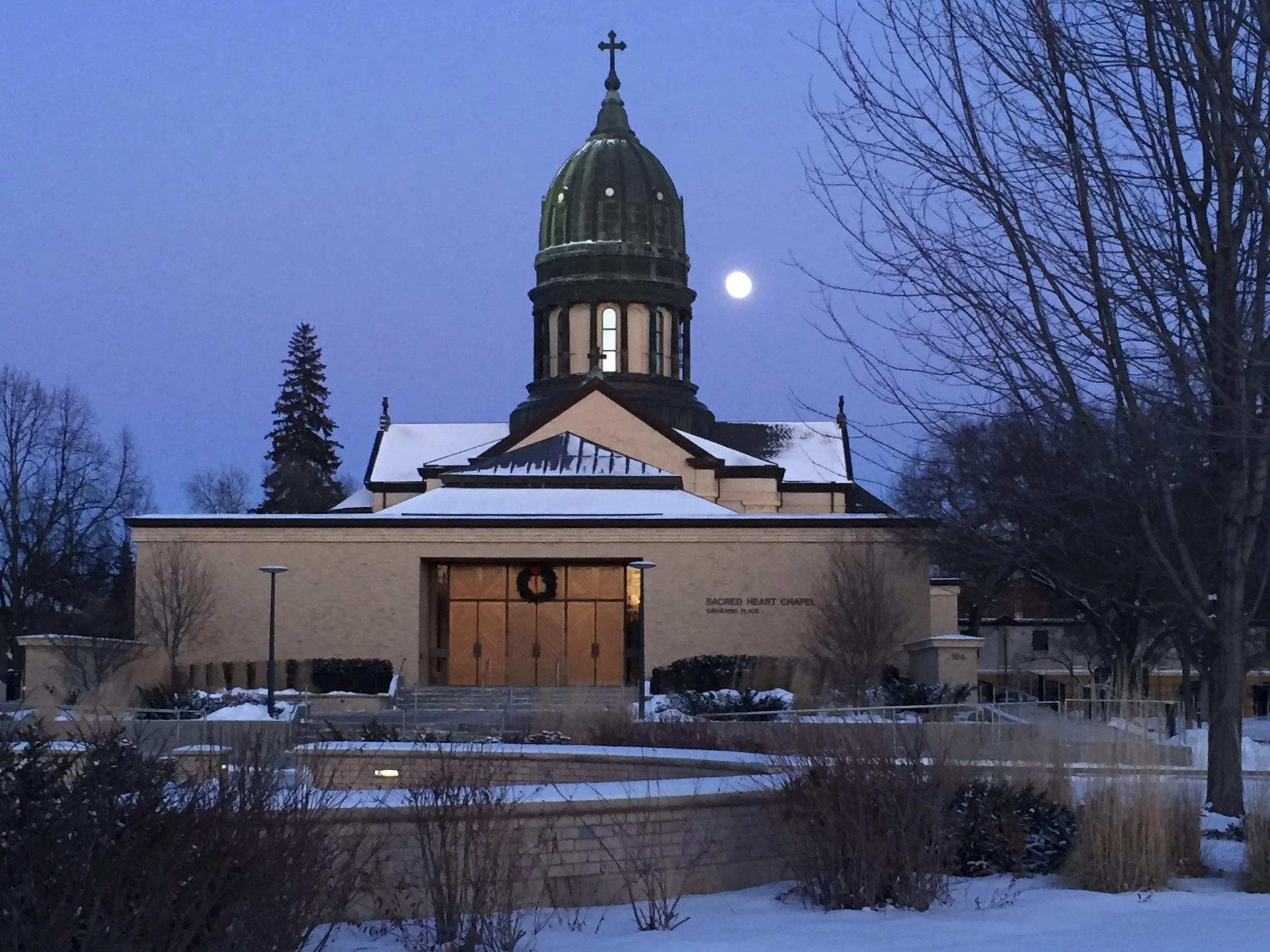“God became human, so we can become humane.”
Today, at the day of the turn of the year, when the old is not yet gone and the new is not yet visible, we approach another important night marking the middle of the 12 Days of Christmas. Just as the holy night reminds us of the sacred moment, when light breaks into the dark, the turn of the year invites us into another in-between space of waiting and new beginnings.
Transitional space: The cloister walk
Indeed, on our spiritual pilgrimage transitional spaces are part of the journey. We walk through the dark of the night, waiting for dawn to break in. Thus, religious traditions incorporate thresholds into the rhythm of life, e.g. we celebrate Christmas Eve and Easter night. God comes to us in the middle of the night. Approaching New Years Eve I invite you to take some time to pause at the threshold once more.
The monastic architecture, which we have used as metaphor for our inner journey throughout these days has incorporated the threshold in its design. I was always fascinated by cloister walks, the quadrangle in the monastery, which frames a courtyard, and connects the different places of the monastery. In earlier times it was often the cemetery of the monastery, thus a cross sat in the middle. It is often also used as a garden for meditation and rejuvenation.
Thus it connects the interior and exterior of the monastery, the sacred spaces inside and outside, and reminds us that we are part of the bigger whole, the world around us, the creation we are called to care for, and the seasons, which give our life its rhythm.
I feel particularly drawn to the cloister walk because it somewhat connects the inner and the outer, marking the transition between time and space.
Thus walking the cloister walk, with four sides framing the inner garden, we are invited to meditate on the rhythm of the life of which we are a part. I feel particularly drawn to the cloister walk because it is a space between, a space that connects the inner and the outer, marking the transition between time and space. Each has its time, the retreat inside oneself, just like the nun retreats in her cell, and stepping outside, in the garden as image of creation as a whole. Our life is deeply enmeshed in the rhythm and nature of the outside world, the givens of our existence, the seasons and traditions, the people with whom we are on the journey and those we meet on the way.
Walking the cloister walk reminds the monastic to cultivate their own inner garden, and to tend to their own seasons of life, as well as to their weaknesses and possibilities.
The cloister walk thus stands for grounding our life in the exterior and interior world, and for working the soil and the soul patiently. As humility is connected to humus, the human must remind us of our humaneness, which needs to be grounded in the soil of Mother Earth.
Walking the walk
Walking the cloister walk can be done as a practice of meditation. For this you do not need the quadrangle of the monastery. You can just walk through your inner or outer rooms, like you would square a garden. Attentively, openly, in a meditative way. I have done so sometimes by just squaring the inside of a church, walking a labyrinth, or our little herb garden in the backyard. Even the long and crowded corridors of an airport can become a cloister walk, a sacred time in transition.
As the cloister walk is a transitional space, so is the 7th day of Christmas. We walk, willing or not, towards the new year, leaving the old behind. Even if we want to hold on to it, savor it a bit longer, we cannot. We are indeed in a transitional space, and we are invited to walk it with care, attentive to what it wants to reveal to us.
As the cloister walk is a transitional space, so is the 7th day of Christmas. We walk, willing or not, towards the new year, leaving the old behind.
This walking must be done slowly, with intention. And with an inner gaze. The slow, repetitive motions of walking, help to ground us, to calm the mind, until we are ready to take notice again of what is waiting at the threshold. One foot touches the ground, the other leaves, the balance in between, slowly progressing, watching more the process than the goal. With such an open stance, one becomes aware of deeper things.
Meditation at the cross walk
How can I treat this transition to the new year as a threshold? Which ritual would help to do so?
Where do I ground myself, what has given me stability throughout the year?
What do I want to take with me into the New Year?
What do I want to leave behind?
A Blessing at the turn of the year
May this night between the years
embrace you warmly
with what you bring
and what you want to leave behind.
May this night
welcome you and guide you
slowly
patiently
and forgivingly
to new beginnings.
May it be so. Amen.
AF



